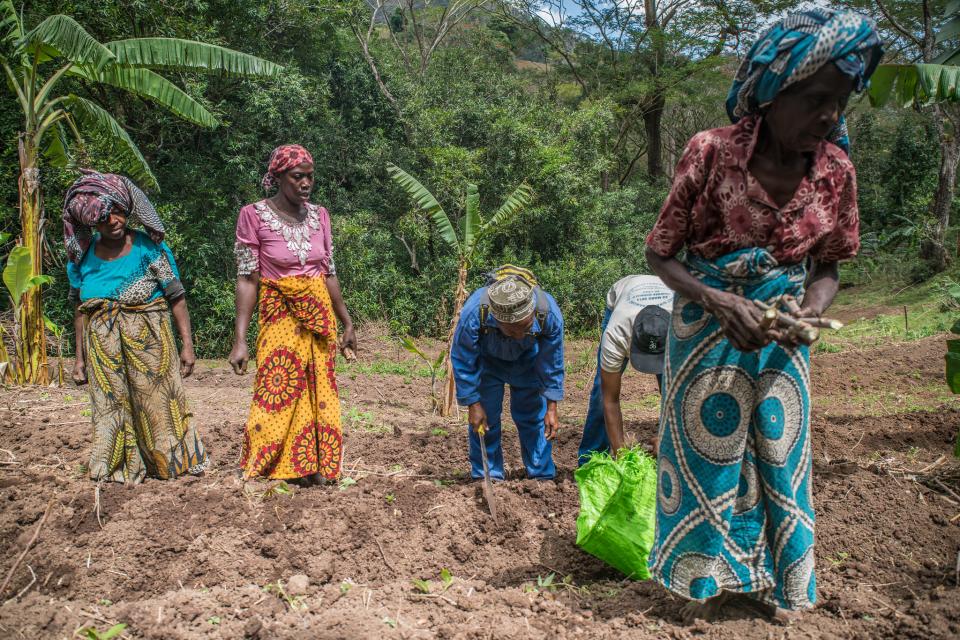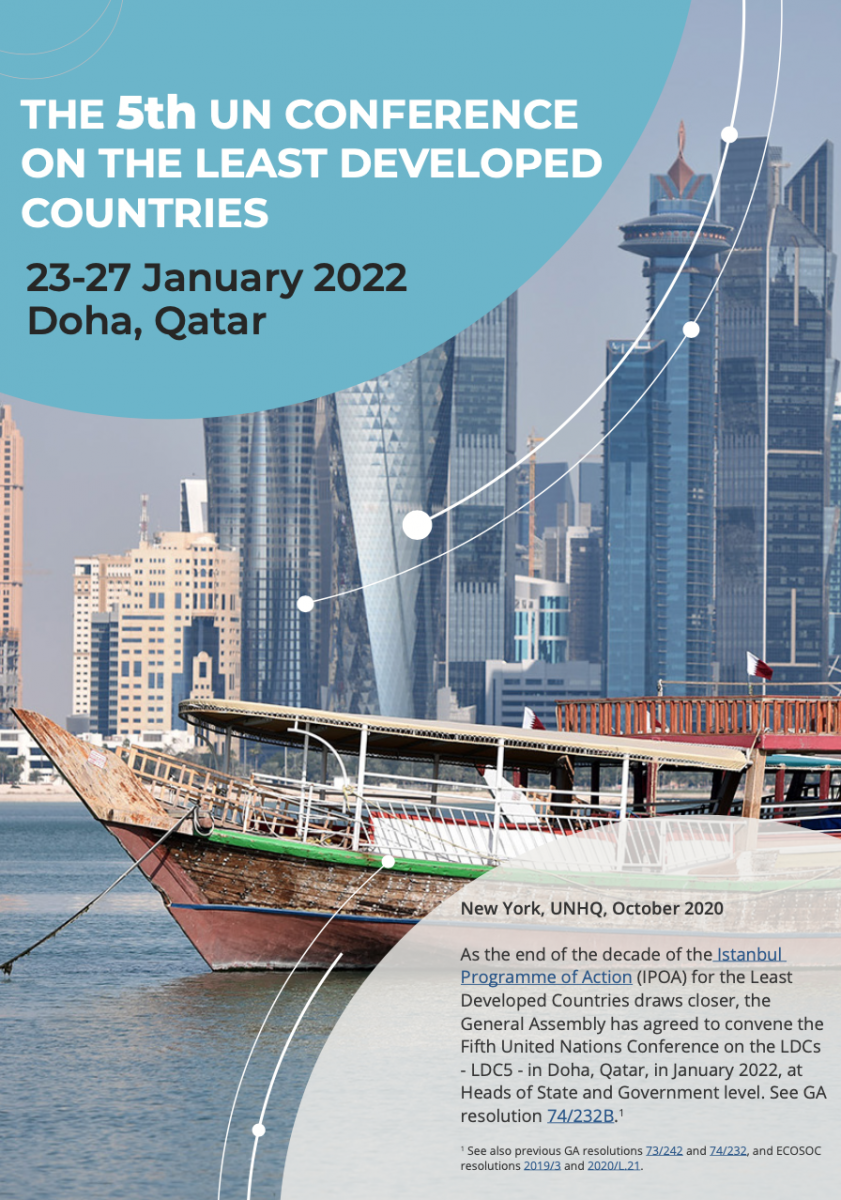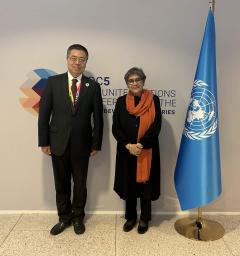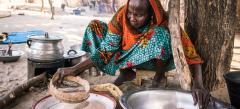- عربي
- 中文
- English
- Français
- Русский
- Español

Photo: Community plant trees to support the protection and management of the Mutsamudu River Basin in Comoros. IWRM AIO SIDS
FAQ for LDC5
How can we help you?
What are Least Developed Countries (LDCs)?
Since 1971, the United Nations has recognised the Least Developed Countries (LDCs) as the “poorest and weakest segment” of the international community.
About 40% of world’s poor live in LDCs. Many are suffering conflict or are emerging from one. LDCs account for 13% of the world’s population but only about 1.3% of global GDP - and less than 1% of global trade and Foreign Direct Investment (FDI). Barely a fifth of people in LDCs have access to the internet.
The low level of socio-economic development in LDCs is characterised by weak development, low and unequally distributed income, and scarce domestic financial resources.
LDC economies typically rely on agriculture, which can be affected by a vicious cycle of low productivity and low investment, and can get left behind as wealthier countries develop more productive farming technologies.
Generally, LDCs rely on exports of a few primary commodities as major sources earnings, leaving them vulnerable to external shocks. Some LDCs have diversified into manufacturing, though largely remain limited to labour-intensive industries, such as textiles.
These development constraints often result in weak economies characterized by scarce domestic resources, weak capacities to manage the economies, chronic external deficits, high debt and heavy dependence on external financing.
What criteria are used to determine LDC status?
The LDC category was established by the UN General Assembly in 1971 as an acknowledgment that special support measures were needed to assist the least developed of the developing countries.
The United Nations defines LDCs as countries that have low levels of income and face severe structural impediments to sustainable development.
LDC Criteria:
-
Income: Countries must have an average per capita income of below USD$1,018 to be included in the list, and above USD$1,222 to graduate from the list;
-
Human Assets: Countries must have a low score on the Human Assets Index, a tool that measures health and education outcomes, including under-five mortality rate, maternal mortality, adult literacy rate and gender parity for secondary school enrolment;
-
Vulnerability: Countries must score high on the Economic and Environmental Vulnerability Index, which measures factors like remoteness, dependence on agriculture and vulnerability to natural disasters.
For more information on these measurements, see the CDP Secretariat (DESA) website here.
INCLUSION: To be classified as an LDC, a country must satisfy all three criteria and agree to the classification.
Today, 47 countries are classified as LDCs.
GRADUATION: To be eligible for graduation, a country must reach thresholds in two of the three criteria in two consecutive reviews. Alternatively, a country may graduate based on the income-only criterion.
To read more about the graduation process, visit this webpage.
LDC5 Preparations in the COVID-19 Era
Do LDCs have any special benefits?
Yes. In the Istanbul Programme of Action for the LDCs (IPOA), development partners agreed to a range of concrete actions in support of LDCs’ national plans under eight priority areas. Several of these actions have also been reflected in the Sustainable Development Goals (SDGs).
These measures can be grouped into three main areas: (a) international trade; (b) development cooperation; and (c) support for participation in the United Nations system.
Trade-related international support measures aim at facilitating the integration of LDCs into the global economy. Examples of such measures include: preferential market access for goods (such as the EU EBA Initiative) and services; special treatment under World Trade Organisation rules and certain regional trade agreements; and technical assistance and capacity building.
Other international support measures include a range of financial and technical assistance provided by multilateral and bilateral partners. These include special programmes and budget allocations at the UN, including the Technology Bank for LDCs, the Enhanced Integrated Framework, and the LDC Fund established by the United Nations Framework Convention on Climate Change (UNFCCC).
A large share of development cooperation is in the form of Official Development Assistance (ODA) provided by members of the Development Assistance Committee (DAC) of the Organization for Economic Co-operation and Development (OECD) and other donors. LDCs also benefit from South-South development cooperation.
However, ODA to LDCs by DAC members has been declining in real terms and is considerably below the IPoA targets of 0.15 to 0.2% of Gross National Income (GNI). In 2018, only six donor countries - Denmark, Luxembourg, Netherlands, Norway, Sweden and United Kingdom - met the IPoA target of committing 0.15 per cent or above of their GNI as ODA to the LDCs.
Other support measures help LDCs participate in international forums, including caps and discounts on contributions to the budget of the United Nations and financial support for representatives of LDCs to travel to UNHQ for General Assembly and other UN meetings.
For more information on available LDC international support measure, visit the LDC Portal.
How many countries have graduated from the LDC category?
The category of LDCs was established in 1971. At that time there were 25 countries. The membership has grown over time reaching the current 47 in the LDC group today.
Before 2011, when the Istanbul Programme of Action for the LDCs (IPOA) was adopted, only three LDCs had graduated from the category. These were Botswana (1994), Cabo Verde (2007) and Maldives (2011).
The IPOA set an ambitious goal to see half of the LDCs graduate from the category during its period of implementation from 2011 to 2020. In that time, only Samoa (2014) and Equatorial Guinea (2017) graduated.
Though the IPOA target has not been met, progress made by several LDCs has led to a record number of countries meeting the graduation criteria.
There are now twelve LDCs at different stages on the graduation path.
In December 2020, Vanuatu will graduate, followed by Angola in early 2021. Bhutan is scheduled to graduate in 2023 and São Tomé and Príncipe and the Solomon Islands in 2024.
In February 2021, a triennial review of the LDC category will be helpd, at which time Lao PDR, Bangladesh and Myanmar, could be recommended for graduation. The potential eligibility of Nepal, Timor-Leste, Kiribati and Tuvalu for graduation will also be reconsidered in 2021.
For a complete background on all graduation decisions read this factsheet.
New Articles
- 1 of 12
- next ›






